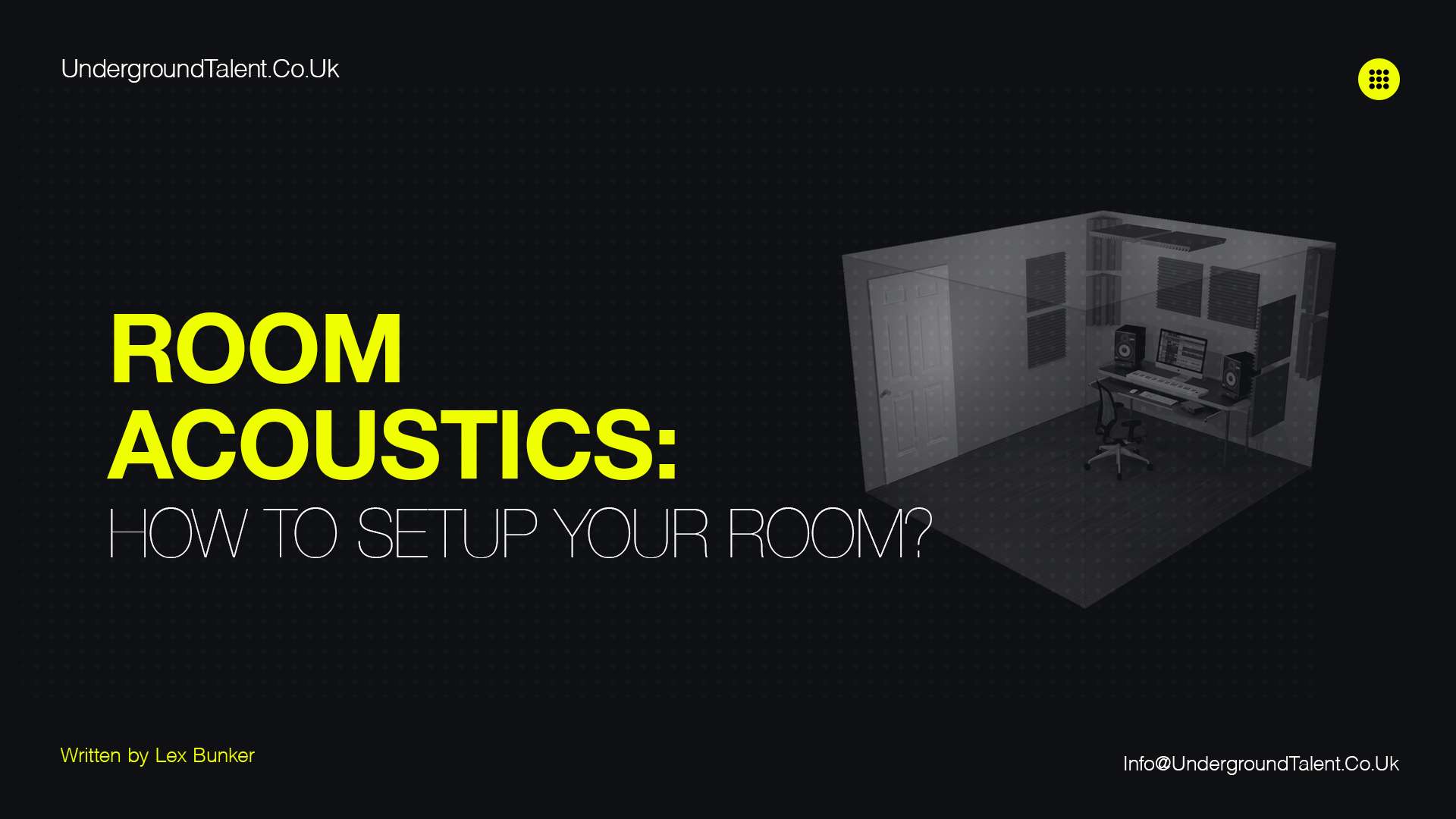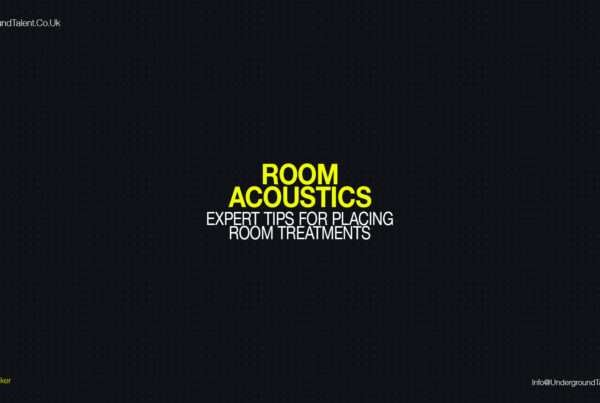Room acoustics: How to Setup Your Room? | Introduction
Room acoustics is an essential part of any home audio setup, but it is often overlooked. The way your room is set up can have a huge impact on the sound quality and overall listening experience. Poor room acoustics can lead to muddy or boomy bass, a lack of clarity in the midrange, and echoes that make it difficult to hear individual instruments or vocals. In this article, we will take a closer look at how to setup your room for optimal acoustics, so that you can enjoy music and movies to their fullest potential.
We will cover a variety of topics, including room layout, furniture placement, and sound-absorbing materials. We will discuss how to identify and correct common acoustic problems such as flutter echo and standing waves. We will also provide tips on how to use room-correction software to further optimize your listening experience. Whether you’re a music lover, a home theater enthusiast, or just someone looking for a more comfortable and enjoyable listening experience, this article has something for you. We will guide you through the process of setting up your room for optimal acoustics, step-by-step so that you can achieve the best possible sound quality in your home.
Read the previous articles of the series Room Acoustics:
- Room Acoustics: Why do you need room treatment?
- Room Acoustics: Understanding Sound Waves and Reflections
- Myths About Room Acoustics Explained
- Room Acoustics: How to Test the Acoustics of Your Room?
Room acoustics: How to Setup Your Room? Let’s Get Started!
Setting up a room for optimal acoustics can be a complex process, but there are a few key steps that can be taken to improve the sound quality of the space:
- Measure the Room
- Identify problem areas
- Add sound-absorbing materials
- Use bass traps and diffusers
- Experiment with positioning
Measure the Room
The first step in setting up a room for optimal acoustics is to measure the room. This includes taking the dimensions of the room, such as the length, width, and height. These measurements will be used to determine the volume of the room and the proportion of the room’s surfaces. It is also important to measure the reverberation time of the room, which is the amount of time it takes for sound to decay in the room.
This can be done by measuring the sound decay time using a sound meter or by using a software program designed for room acoustics measurement. Additionally, measuring the sound pressure level (SPL) at different locations in the room can help to identify any problem areas that may be impacting the sound quality of the space. This information will be used to determine the best course of action for treating the room acoustically.
Don’t Miss: Rave In London? Rave Responsibly.
Identify problem areas
Once the room has been measured, it is important to identify any problem areas that may be impacting the sound quality of the space. This could include areas with a high reverberation time, which can make it difficult to hear speech or music clearly.
One way to identify problem areas is by measuring the sound pressure level (SPL) at different locations in the room. High SPL levels in certain areas of the room may indicate that there is an issue with sound reflections, which can cause phase interference and make it difficult to hear speech or music clearly. Another way is by walking around the room while listening to music or speech, this will help to identify areas where sound is unclear, echo-y, or muffled.
Another issue to look for is the standing waves, these are areas where sound waves reinforce each other and create hotspots and nulls, which can lead to uneven sound distribution in the room. Standing waves are often caused by parallel walls or reflective surfaces.
Identifying problem areas is the first step in determining how to treat the room acoustically. With this information, it will be possible to determine the best course of action for improving the sound quality of the space.
Don’t Miss: HZ Multiplier – VST for Free Download + Techno Tutorial
Add sound-absorbing materials
One of the most effective ways to improve the acoustics of a room is to add sound-absorbing materials to the walls, floor, and ceiling. This can include materials such as acoustic foam, fiberglass, or mineral wool. These materials absorb sound waves by converting them into heat energy, which reduces the reverberation time and controls sound reflections.
When choosing sound-absorbing materials, it is important to consider the NRC (Noise Reduction Coefficient) rating of the material. The NRC rating indicates the material’s ability to absorb sound, with a rating of 1 indicating complete absorption, and a rating of 0 indicating no absorption.
It is also important to place the sound-absorbing materials in the right location. For example, it is more effective to place sound-absorbing materials on the walls, ceiling, and corners of the room, as these are the areas where sound reflections are most likely to occur. Additionally, placing sound-absorbing materials behind speakers can help to reduce the amount of sound reflecting back towards the listener, which can help to improve the overall sound quality of the space.
It is also worth noting that the amount of sound-absorbing materials needed will depend on the size of the room and the desired reverberation time. It’s important not to overdo it, as too much absorption can lead to a dead room and it can be unpleasant to the ear.
TIP – Room acoustics: How to Setup Your Room?
One simple tip for improving room acoustics is to add sound-absorbing materials, such as curtains, rugs, and acoustic panels, to hard surfaces like walls and floors. These materials can help to reduce echo and improve the clarity of sound in the room.
Don’t Miss: Fossil Archive aka Roberto / R.M.K. @ Special Guest Interview
Use bass traps and diffusers
Using bass traps and diffusers is an important step in controlling the reverberation and echo in a room.
Bass traps are typically used to absorb low-frequency sound waves, which are known to linger in a room and create a boomy or muddy sound. They are often placed in corners of the room, as low-frequency sound tends to accumulate in these areas. Bass traps can be made from a variety of materials, such as acoustic foam, mineral wool, or fiberglass, and can be designed to be either absorptive or resonant.
Diffusers, on the other hand, are used to scatter high-frequency sound waves, which can create a harsh or bright sound in a room. Diffusers can come in many forms, such as a series of wells or channels, a series of irregularly shaped panels, or even a series of columns. They are often placed on the walls or ceiling of a room to scatter sound waves in different directions and reduce echoes.
Both bass traps and diffusers work together to balance the frequency response of the room and provide a more natural and pleasant listening experience. It’s also good to note that, depending on the room, using a combination of both bass traps and diffusers might be the best solution. Additionally, some rooms might require more bass traps than diffusers or vice versa. A professional acoustician will be able to evaluate the specific needs of your room and recommend the appropriate number and placement of bass traps and diffusers.
Don’t Miss: Techno Events: How to Plan & Organize the Perfect Techno Party
Experiment with positioning | Room Acoustics: How to Setup Your Room?
Experimenting with positioning is an important step in finding the best sound quality for your room. The positioning of speakers and sound sources can have a significant impact on the sound quality of the space. Here are a few things to consider when experimenting with positioning:
Speaker Placement
The position of speakers can affect the sound quality of the room in a number of ways. Ideally, speakers should be placed at an equal distance from the listener and at an equal distance from the side walls. This will help to minimize reflections and create a more balanced sound.
Additionally, speakers should be angled slightly towards the listener to create a more natural soundstage. In a stereo system, it’s recommended to place the speakers at an angle of 60 to 80 degrees relative to the listener, and to keep them equidistant from the listener and the side walls, ideally forming an equilateral triangle with the listener.
Don’t Miss: Underground Talent Interviews – The London Techno Scene & Musch More
Sound source placement
Sound source placement is an important aspect to consider when optimizing the sound quality of a room. The position of the sound source can greatly affect the overall sound experience, and it is important to place the sound source in a way that minimizes reflections and maximizes direct sound. When sound waves reflect off of surfaces in a room, they can create unwanted echoes and reverberation, which can negatively impact the clarity and intelligibility of the sound.
To minimize reflections and maximize direct sound, it is recommended to place the sound source as close to the listener as possible and at ear level. This ensures that the majority of the sound energy is directed toward the listener, rather than reflecting off of surfaces in the room. Additionally, placing the sound source at the ear level allows the sound waves to reach the listener’s ears directly, further enhancing the overall sound quality. It’s also important to note that in larger spaces like auditoriums, concert halls, and other venues, sound source placement is even more important as sound waves can travel a long distance before reaching the listener. In these cases, proper sound source placement can be achieved through the use of sound diffusers and sound absorbers.
Listening position
The position of the listener is just as important as the position of the sound source when it comes to optimizing the sound quality of a room. The listener should be placed as close to the center of the room as possible, as this will help to minimize reflections and create a more natural soundstage. When a listener is positioned closer to the walls and other reflective surfaces, the sound waves can reflect off of these surfaces and create unwanted echoes and reverberation, which can negatively impact the clarity and intelligibility of the sound.
Additionally, placing the listener in the center of the room allows for a more evenly distributed sound experience. The sound waves will reach the listener’s ears from all directions, providing a more natural and immersive soundstage. This is particularly important in larger spaces like concert halls, movie theaters, and other venues, where the sound needs to be distributed evenly to all the listeners. Furthermore, in these spaces, it’s also important to consider the height of the listener, as sound waves can be affected by the height of the listener and how they are reflected. In general, the listener should be placed in a position that allows them to be at the same height as the sound source. This will help the listener to experience the sound in a more natural and realistic way.
Learn: Everything You Need to Know About Music Production
Room layout
The layout of the room plays a crucial role in determining the sound quality of the space. The way a room is designed can greatly impact the overall sound experience, and it is important to design the room to minimize reflections and maximize direct sound. Reflections of sound waves can create unwanted echoes and reverberation, which can negatively impact the clarity and intelligibility of the sound.
One way to minimize reflections and maximize direct sound is by using furniture, curtains, and other soft materials to absorb sound. These materials can help to reduce the amount of sound energy that is reflected off of surfaces in the room, which can greatly improve the overall sound quality. Additionally, by strategically placing furniture and other objects in the room, it’s possible to create a more balanced soundstage, as well as directing the sound towards the listener. Furthermore, the use of sound diffusers and sound absorbers can also help to improve the sound quality in a room. These products can be strategically placed on walls and ceilings, to help scatter sound waves and control the reflections. This will create a more natural and immersive soundstage and a more pleasant listening experience.
Don’t Miss: ØLMØ – Smoking Kills
Room Acoustics: How To Set Up Your Room
Here is a great video by GIK Acoustics Room Acoustics and How To Set Up Your Room:
Don’t Miss: Why Do We Love Electronic Music & How It is Affecting Us?
Conclusion on Room acoustics: How to Setup Your Room?
In conclusion, the sound quality of a room can be greatly impacted by the position of the sound source, the position of the listener, and the layout of the room. By placing the sound source as close to the listener as possible and at ear level, minimizing reflections and maximizing direct sound, and using furniture, curtains, and other soft materials to absorb sound, it is possible to greatly improve the overall sound quality of a space. However, it’s worth noting that these are general guidelines, and the best course of action for treating a room acoustically will depend on the specific characteristics of the space. A professional acoustician may be able to provide more detailed and specific recommendations for your room. Additionally, it’s important to consider the room’s intended purpose and the equipment that will be used in the room when making decisions about materials and positioning.
It’s great that you’ve taken an interest in optimizing the sound quality of your space. If you found this article informative and would like to learn more, stay tuned for the next article in this series which will delve deeper into the topic of room acoustics and will provide more detailed information on how to improve the sound quality of your space. We will also be covering specific materials and methods that can be used to improve the acoustics of a room.
If you enjoyed this article and want to keep learning more about room acoustics and other related topics, follow us on our social media accounts, where we will be posting regular updates and articles on this subject. You can find us on Facebook, Soundcloud, and Instagram. We encourage you to share your thoughts and feedback on this article, and we look forward to continuing to educate and inform you on this important topic.
You can find us on, and, and don’t hesitate to reach out to us if you have any questions or comments by email at info@undergroundtalent.co.uk.
Don’t miss out on the latest and greatest underground talent! Subscribe to our YouTube channel now and stay on top of the freshest and most exciting new acts in the techno scene. Click the subscribe button and join our community of techno music lovers today!
Learn More: All About Room Acoustics
And Always Remember…
Have Fun & Be Creative!





